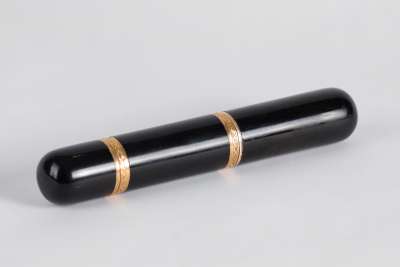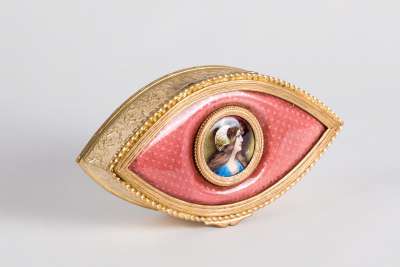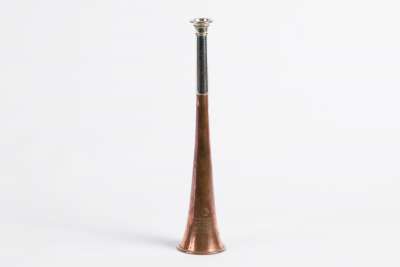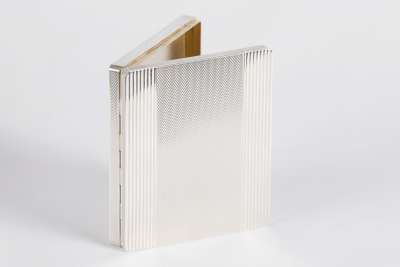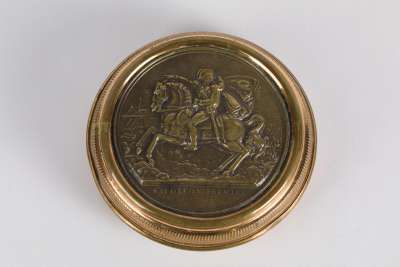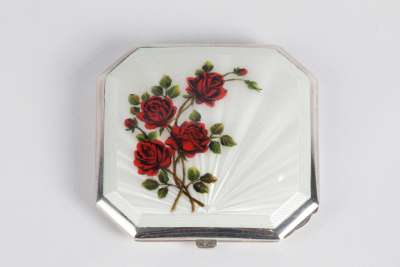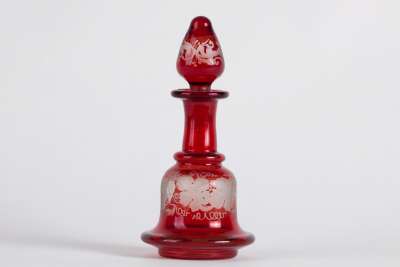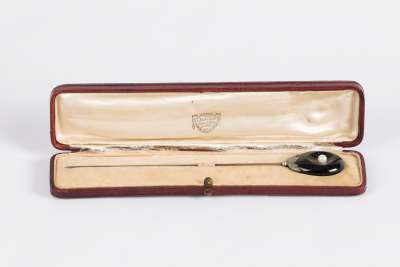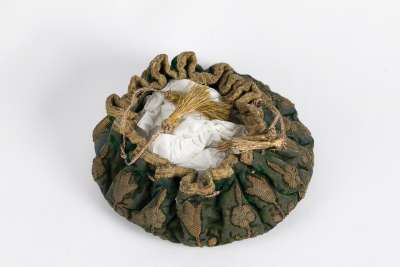The Victorian Brass Duck Head Paperclip with Red Glass Eyes, circa 1880, is a testament to the elegant design sensibilities of the era. Originating from Britain, this piece features a meticulously crafted duck head, formed in brass with intricate feather-like texturing. The striking red glass eyes are a standout feature, providing a vivid contrast against the warm, aged brass surface. The duck's head seamlessly transitions into a functional paperclip mechanism, showcasing the Victorian penchant for combining beauty with utility. The brass exhibits a rich patina, indicative of its historical authenticity and age. Circa: 1880
Condition Report
The Victorian Brass Duck Head Paperclip is in commendable condition given its age. The brass has developed a uniform patina, typical for pieces from the late 19th century, with some oxidation present, especially on the underside. The red glass eyes are remarkably preserved, maintaining their vibrant hue without any cracks or chips. The clip mechanism remains functional, though it bears signs of wear and oxidation that are consistent with regular use over the years. Overall, the piece retains its historical integrity and charm.
Dimensions
Weight: 140gm, Length: 13.5cm, Width: 2.5cm, Height: 2cm.
A Practical and Decorative Desk Accessory
This brass paperclip served dual purposes as both a utilitarian and decorative desk accessory during the Victorian era. The design reflects the period's emphasis on combining functionality with artistic expression. The clip, cleverly integrated into the duck’s head, is not merely a whimsical touch but a reflection of the era's fascination with nature-inspired motifs. Such items would have adorned the desks of the upper-middle-class, adding an element of sophistication and style to everyday office tasks.
Victorian Style and Craftsmanship
Embodying the Victorian style, this paperclip is characterised by its meticulous craftsmanship and nature-inspired design. The use of animal motifs in decorative objects was a hallmark of the era, mirroring a cultural interest in wildlife and the natural world. The duck head, with its detailed texturing and vibrant glass eyes, exemplifies the Victorian love for integrating elements of the natural environment into functional household items.
The Craft of Brass and Glasswork
Though unmarked, the quality of craftsmanship of this piece suggests it was produced by skilled British brassworks of the late 19th century. The duck head is cast in brass, with intricate detailing that mimics feathers, showcasing the artisan’s skill in metalworking. The red glass eyes have been expertly set into the brass, adding a lifelike quality to the piece and demonstrating the high standard of glasswork prevalent during the period. Such craftsmanship ensured durability and visual appeal, making it a cherished item for Victorian-era consumers.
Crafted by Unmarked British Brassworks
Although this Victorian Brass Duck Head Paperclip does not bear a maker's mark, its refined craftsmanship is indicative of British brassworks from the late 1800s. These artisans were known for their attention to detail and ability to produce functional yet decorative pieces. Such items were often distributed through stationers and specialty shops, appealing to those seeking unique and sophisticated desk accessories. The lack of a visible mark does not detract from its quality, which stands as a testament to the skill of the era's artisans.
Collected by Fans of Victorian Desk Accessories
This type of antique is highly sought after by collectors of Victorian desk accessories, particularly those featuring animal motifs. The fascination with wildlife during the Victorian era led to the creation of numerous decorative items, with duck heads being a popular theme. The intact glass eyes and well-preserved brass of this paperclip add to its appeal, offering collectors a piece that is both historically significant and visually striking. This paperclip not only serves as a functional item but also as a window into the aesthetic preferences of the 19th-century British upper-middle class.



